NEW DAY

DANCING IN THE STREETS TIL 4AM.
BROOKLYN ON FIRE.
HAPPY DAY FOR THE USA!
POST LATER.


DANCING IN THE STREETS TIL 4AM.
BROOKLYN ON FIRE.
HAPPY DAY FOR THE USA!
POST LATER.
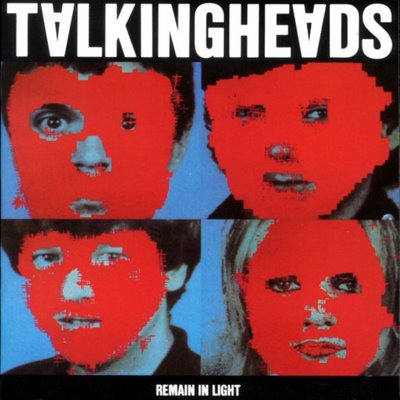

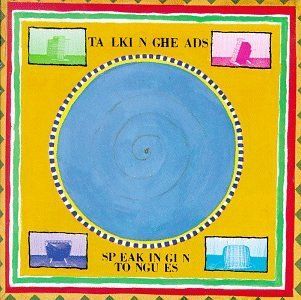
Talking Heads: Crosseyed And Painless and Born Under Punches
Taken from the album Remain In Light on Sire (1980)
And: I’m Not In Love
Taken from the album More Songs About Buildings And Food on Sire (1978)
And… Girlfriend Is Better
Taken from the album Speaking In Tongues on Sire (1983)
As a man who was born into the ignominious era of Reaganomics and Alf (among other things), it is easy sometimes to forget that I was also birthed into a exciting transitional period in American music. That as punk and disco were crashing and by most accounts burning; that while much of radio-played pop music bordered on the unlistenable (don’t tell the revivalists–they might get upset); and even as many of the tried and true bastions of musical purity (see soul, see jazz) seemed to be pushing through uncomfortable growing pains… a unique climate was beginning to blossom. One that would allow the ushering in of some genuinely outsider music. The kind of explosive, subversive, bizarre and utterly enjoyable pop that probably would not have flown at all if the pervasive landscape had not been so barren.
I’m not going to embark on a whole hoo-rah New Wave rant here. Partly because, truth be told, I’m not a particularly ardent fan of the New Wave writ large… (Certain exceptions exist obviously; Blondie comes to mind.) I did however grow up listening to the Talking Heads (my dad was a fan and had a “Best Of” or two laying around) and though I largely took them for granted in my youth, I’ve been recently re-inspired by the how-shall-we-say “unique” vision that David Byrne & Co. realized with their music. Let’s put it this way: I just saw Stop Making Sense for my first time and, um, it was incredible.
(If you haven’t seen it, do not pass go, do not collect $200. Witness art. Byrne and director Jonathan Demme did it so proper they even got Pablo Ferro [Dr. Strangelove, anyone? Look him up.] to do the opening/closing credit font; I swear that’s only damn font I’ve ever seen that makes me want to weep for its beauty…)
But I digress… So I went online and downloaded every Talking Heads album from ’77 right on through and have since been slowly wading through this very impressive body of work, unearthing plenty of gems that were completely new to me and re-embracing a few of the ones that I had forgotten about…
The songs here are ones that stuck out as particularly innovative or amazing or, as in all of their cases, struck me as highly danceable. But again, these are just a small taste of a prolific and incredibly diverse body of work.
“Girlfriend” is the only one of them that I really remembered from childhood and still occasionally drop in DJ sets. The others were all pretty new to me. And boy oh boy. What treats. Listen to Brian Eno getting CRAZY afro-beaty on “Crosseyed”… And how ’bout the BLISTERING dance-punk of “I’m Not In Love”? LCD Soundsystem, The Rapture? Recycled goods.
Art of real character and depth should be discovered and re-discovered. Music this good might just require your own personal journey into the known and the unknown.
First of all, thanks to everyone who came out to the gig on Thursday night; we had a really great time – hope you did too.
Will (Murphy’s Law) and I collaborated on our first official Boogaloo[la] mix-CD, Ritmo Del Camino (rhythm of the road). The idea behind the mix was to capture what our gig sounds like. As such, there’s a mix of old and new tracks, a range of tempos and genres, but it’s all meant to get people a’movin’. I haven’t done a party mix in ages and hopefully, Ritmo will inspire me to go back to the lab to knock out another one of my own.
Here’s the tracklisting:
Chua Chua Boogaloo–El Gran Combo
Tumbando Coco– Los Tropicales
Karakatis–Jose Maria
Soupy–Maggie Thrett
If you can want–Smokey Robinson
100 Yard Dash–Raphael Saadiq
You’re Losing Me–Ann Sexton
Sayin’ It and Doin’ It–SugaSwing Session
Bomba–Hermanos Latinos
Belleza Espiritual–Orquesta Zodiac
Lupita–Perez Prado
Cookies–Brother Soul
Disco Function–Rare Function
Anikana-O–Kongas
No Nos Pararan–Charanga 76
Dilo Como Yo–Chico Mann
All I Do– Stevie Wonder (U-Tern remix)
I’m Your Pimp–The Skull Snaps
One Way Ticket–The Real Thing
Eso Se Baila Asi–Willie Colon
Donde–Bronx River Parkway
Baby–The Phenomenal Handclap band
Under The Street Lamps–Joe Bataan
Right now, we have copies available for digital purchase; we haven’t made a firm decision on how many physical copies we plan to sell but there will be CDs made at some point (beyond the ones that we gave out last Thursday) for those who prefer the physical object. The only caveat is that the final CD will be of the same sound quality as the download (256-rate MP3s).
By the way, if you didn’t get a copy last week, come back and holler at me or Will this week or next and we should still have copies.
If you want to download the full-res artwork, go here.


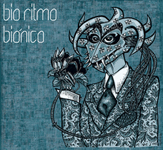
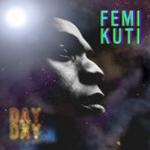
Keziah Jones : Pimpin’ & My Kinda Girl
taken from the album Nigerian Wood on (2008)
Curumin : Compacto & Esperanca
taken from the album Japan Pop Show on Quannum (2008)
Bio Ritmo : Bionic Boogaloo & Dime Vida
taken from the album Bionico on (2008)
Femi Kuti : Tell Me
taken from the album Day By Day on Mercer Street (2008)
New music from artists I love who refuse to sound like they’re supposed to. Whether it’s inventing new genres like Keziah Jones’ Afrobeat-folk-soul, or giving up the big label and big studio production sound like Femi Kuti clearly did on this latest record, these guys are all going their own way.
Keziah is definitely one of my favorite artists around right now. There’s just nothing else out there that sounds like his music. Gorgeous layered harmonies, creative instrumentation (I thing I hear an Indian Tamboura and baritone clarinet on “Pimpin'”), and elvolving arrangements that always seem to travel someplace new by the end of the song. So what, if this record sounds a lot like his first one? The first one was brilliant!
I’m his number one fan. Nigerian Wood includes a second CD of songs that feature just Keziah and his guitar- almost like a really good demo tape.
Curumin come correct with a laid-back album of funky samba-hop. Minimal production and simple song writing give the record a classic old-school feel. The whole album is very listenable and makes for a great Sunday afternoon soundtrack. I do kinda wish that there was another danceable track on here somewhere- “Caixa Preta” brings a lil Baile Funk flavor, but I’m talking about some simple dancefloor samba.
Bio Ritmo have really stepped up their sound with this latest release. High energy all the way through, this CD is a certified party starter. I love hearing spacey, retro-sounding synths in the mix on salsa records! Why don’t more latin groups do this? It reminds me of a select few Latin records I have from the early 70’s when psychedelic, funk, and rock influences were all finding their way into Latin music (check Tipica 73’s “La Candela” for more of the good stuff).
And finally, a new album from Femi. Nothing dramatically new sounding on here, but his take on straightforward, minimally-produced Afrobeat is a treat in itself. Compared to other releases from Femi, this one comes closest to his fathers musical roots- thunderous horn section, churning organs, watery wah-wah and plenty of percolating percssion. 7 years after “Fight To Win”, it’s great to hear what Femi sounds like in the studio- especially in this somewhat stripped down setting.

Sabo & Zeb : Sanguebom ft. Andrea Monteiro
taken from the album Global Warmbeats on Irma (2008)
Sabo : Easy Star (Uptempo Mix)
taken from the 12″ available here on Sol Selectas
Trick Turner : Buddahcada
taken from the 12″ available here on Juxtaphone
Sugarloaf Gangsters : Ritmo Do Rouge
taken from the 12″ available here on Gamm
Bebel Gilberto : Aganju (Spiritual South Remix)
taken from the album Bebel Gilberto Remixed on 6 Degrees
Here’s a bag of dancefloor goodness inspired by the highly talented DJ/producer/all-around-nice-guy: Sabo. This man can be found DJ-ing regularly in NY (occaisionally he does Saturdays at Bembe where I still hold down Thursdays) and is often behind the counter at Turntable Lab giving good advice on what records to buy (I guess he just took over as store manager now, so go say hi). Last time I stopped in he introduced me to West Coast cool cat Trick Turner who was looking pleased with a stack of fresh vinyl in his hands which included my own Cleva Remix. Check his Sol Selectas website to try to keep up with all his gigs and records.
In addition to getting my mitts on the latest twelves from from both these guys, Sabo was generous enough to hook me up with a copy of his new full-length album (available in digital) produced with the funky Middle Eastern multi-instrumentalist Zeb. Global Warmbeats is a nice mix of dubby house and downtempo with plenty of touches from the Brazilian, Latin, and Disco sounds that can be heard in a Sabo set. Check “Rise Again” and “Devastating” for two other favorites of mine from the album.
Once I got in the samba/remix state of mind, I felt like sharing a few other staples I’ve been keeping in my crate for a while now. Sugarloaf Gangster’s are at the top of their game with “Ritmo Do Rouge”- a song that sounds big enough to bring a packed stadium into a dancing frenzy. Check their compilations on Murge Discos to hear where they find some of their inspiration (and samples).
Bebel is of course Brazilian royalty; being the daughter of Joao Gilberto who helped invent the Bossa Nova. This re-work from Spiritual South-who have been featured here before- is a time tested crowd pleaser.
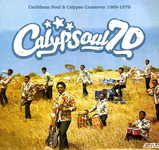

Lancelot Layne : Yo Tink It Sorf?
Biosis Now : Independent Bahamas
both taken from the compilation Calypsoul 70 on Strut (2008)
Orchestre Poly-Rhythmo de Cotonou : Iya Me Dji Ki Bi Ni
& Mi Homlan Dadale
taken from the compilation The Vodoun Effect on Analog Africa (2008)
Here’s a few picks from recent compilations that I’ve had in heavy rotation. I figure we must be approaching the tipping point where nearly all the good forgotten 70’s funky stuff from around the world has been unearthed and re-issued and then what will be left but to turn to the 80’s! I’m picturing comps of drum machine & casio weirdness from Syria- wait a minute, someone’s already released that record (and it’s actualy pretty good)! But perhaps I’m wrong and more bounty like this will continue surfacing for as long as my hearing is good.
The Lancelot Layne is a track that I already had in my collection from the great Jeff Recordings compilation that came out a few years ago (is this recycling the sign that we’re nearing the end?), but I’m glad that I was reminded of it again on this new comp from Strut. What a certified banger! Still will kill a dancefloor to be sure- and I’m scheming a remix. The rest of this compilation maintains a similar level of caribbean heat with plenty of disco, funk and reggae in the mix. The track from Biosis Now is something I heard when my good friend Busquelo picked this LP out of a Brooklyn thrift store.
And big shout Samy at Analog Africa for putting together this latest collection of lo-fi, syncopated (and sometimes perfectly out-of-tune) Beninese rarities. When he lacks frequent updates to his website, it must be because he’s busy putting out another solid and legit release like this one.
Sad update: on my way to host my weekly radio show, I absent-mindedly left my bag full of all my latest and greatest CDs on the subway (to be fair, I was perhaps awestruck by the beautiful young lady sitting accross from me, but still, I’m stupid). So I’ve now lost both of these albums as well as about 50 others- most I hadn’t even ripped to digital yet. Thanks to the almighty that it wasn’t my VINYL!!!